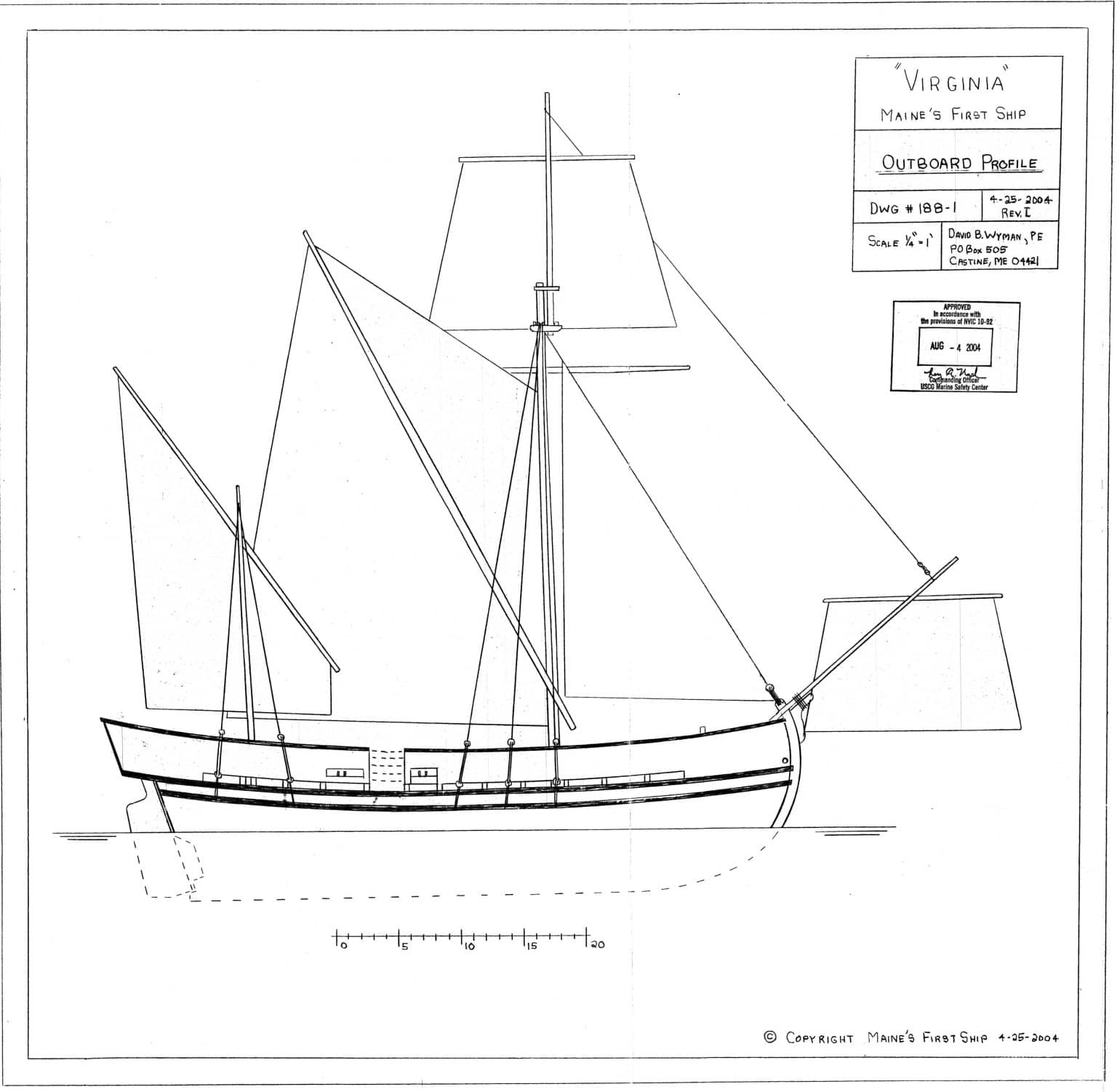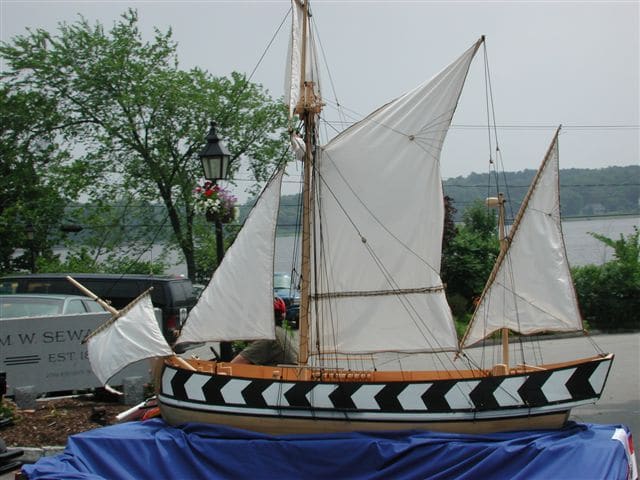Virginia Working design
The second stage of the design was a working design for the new Virginia. This would need to be a design in great detail. While this is a reconstruction of an early 17th-century pinnace, it is also designed to be a floating classroom and be approved for passengers by the US Coast Guard. Thus the design includes an engine and electricals which did not exist in the 17th century.
A number of other changes were required for the 21st century. There are high bulwarks so passengers do not fall off the deck. On deck there is storage for personal floatation devices. There is a head in the crew area and watertight bulkheads between the compartments below deck.
David Wyman is an independent naval architect in Castine Maine. He did an extensive redesign for the 1787 HMS Bounty. He was involved in the underwater archaeological excavation of Defence, an American Revolution era vessel.
Steve Cobb, Rob Stevens, John Bradford, Bud Warren, and others on the MFS vessel committee worked with David Wyman to produce these drawings to submit to the Coast Guard.
The designs submitted to the USCG are the next few items and include:
- Outboard Profile
- Inboard Profile
- General Arrangement
- Midship Section
- Lines
- Deck Framing
MFS received preliminary approval from the USCG in August 2004.
The drawings were then used to build two models of Virginia and the ship itself. Several modifications were made during this process. The designs shown here are mostly the Coast Guard versions from 2004.
John Bradford used this drawing to show the coloring of Virginia. Red and white are the colors of James I. Tanbark sails were commonly used as they held up better.



